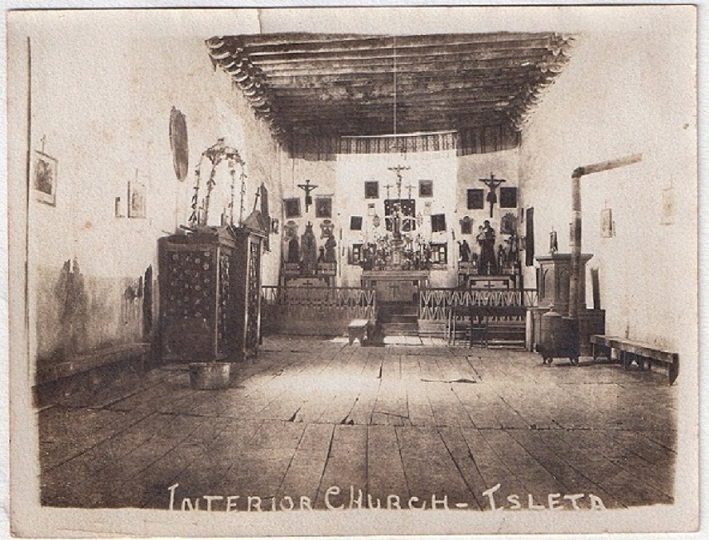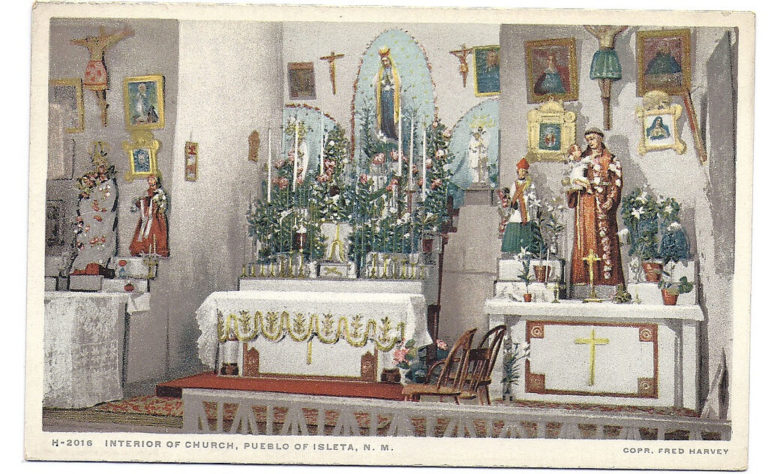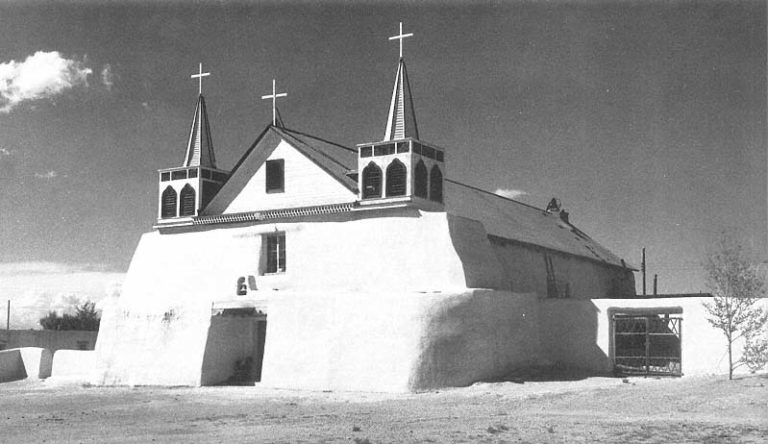The old church at Isleta Pueblo houses the remains of Fray Juan Jose de Padilla, a Laguna Pueblo missionary who was stabbed to death by unidentified assailants in the mid-1700s and whose coffin is also believed to have burst from his burial, his corpse looking as fresh as the day he died.
The mission church at Isleta Pueblo in New Mexico was built in 1613 and is one of the oldest surviving mission churches in the United States. The tale begins in the mid-1700s with a missionary named Fray Juan Jose de Padilla. Padre Padilla was maliciously attacked and stabbed to death by unknown assailants. Then he was buried in the church floor near the high altar in 1756. Nineteen years later, during one Mass, the altar and floor of the church began to tremble for no discernible reason. The strange activity was also accompanied by inexplicable strange noises coming from under the ground. The people present could not fathom what was going on until the body of Padre Padilla suddenly broke up through the earthen floor.
When surprised churchgoers and clergy examined the body, they found that it not only looked as fresh as the day Padre Padilla had died but was also remarkably moist, supple, and even warm to the touch. Even the clothes were immaculate and intact. By all accounts, the body, by every appearance, seemed to still be alive. Baffled by the apparent freshness of Padre Padilla’s body, various experts and church authorities thoroughly examined it. Yet, they could not find a rational explanation for why it should be so strikingly well preserved. Having no concrete answers, the church decided to rebury the body, this time dressing Padre Padilla in the vestments of his Franciscan order and giving him a proper Franciscan burial. It was thought that respecting the remains in such a way would put the Padre at peace and prevent any further incidents. It didn’t work.
In 1819, Padre Padilla’s coffin once again burst through the church’s floor. Although 44 years had passed since the first time this had happened, Padre Padilla’s corpse was still completely fresh, and his clothes were no more degraded than before. The remains were examined again, and no explanation could be found just like before. Finally, the corpse was put on public display. Everyone who looked upon it was surprised by how his body looked so alive, as if the Padre were merely taking a nap.
Since so much time had passed since Padre Padilla’s death, and he had never been subjected to any sort of embalming process, the church proclaimed the corpse to be incorruptible. Further supporting this assessment was the clean odor of sanctity that emanated from Padre Padilla’s body, in this case reportedly smelling like freshly watered earth. The rising of Padre Padilla’s perfectly preserved corpse was unofficially deemed a miracle, and the church became the object of a pilgrimage. In addition, it was said that pieces of the Padre’s clothing had miraculous healing powers.
Over the years, the corpse would rise again, and Padre Padilla’s ghost was also said to be sighted roaming the church grounds, further cementing his legend and rooting him deep into the area’s folklore. One hundred and thirty-four years after the initial rising of the corpse, the French Franciscan Anton Docher was plagued by persistent knocking coming from under the floor, which at the time was no longer earthen but covered with wooden boards. The strange knocking became so insistent that Docher decided to tear out the boards and dig under the floor to see at was going on. Legend has it that he cut his arm in the process and developed a gangrenous infection that threatened the need for amputation. In addition, locals said that Docher had incurred Padre Padilla’s wrath for disturbing his grave. However, when Docher prayed to the Padre for forgiveness, his arm spontaneously and mysteriously healed. Docher would stay at the church for many more years, becoming known as “The Padre of Isleta,” and was buried next to Padre Padilla when he died in 1928.
Padre Padilla’s corpse would continue to knock on the floor and erupt from his grave for many more years, each time looking wholly intact and no more decomposed than he ever had. It wasn’t until the church covered the floor with concrete in the 1960s that such activity stopped. None of the phenomena associated with the corpse have ever been satisfactorily explained. So is Padre Padilla’s corpse finally at peace or still knocking and clawing against the tons of concrete overhead, trying to get out once again.
References:
The Incorruptible Corpse of Isleta Pueblo | Mysterious …. https://mysteriousuniverse.org/2014/07/the-incorruptible-corpse-of-isleta-pueblo/


